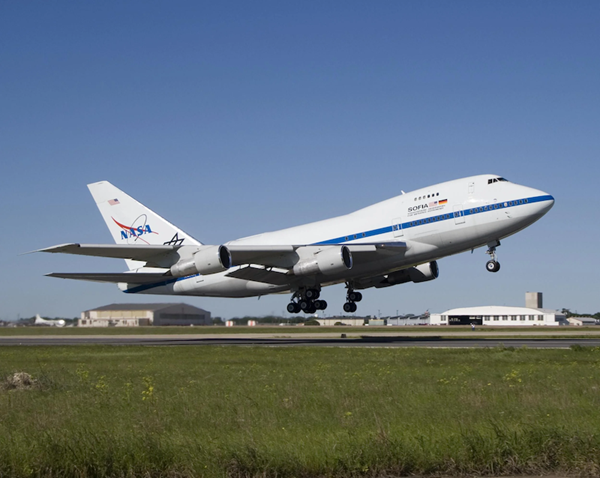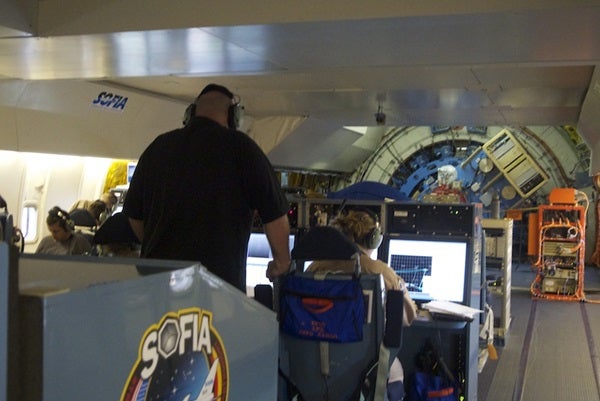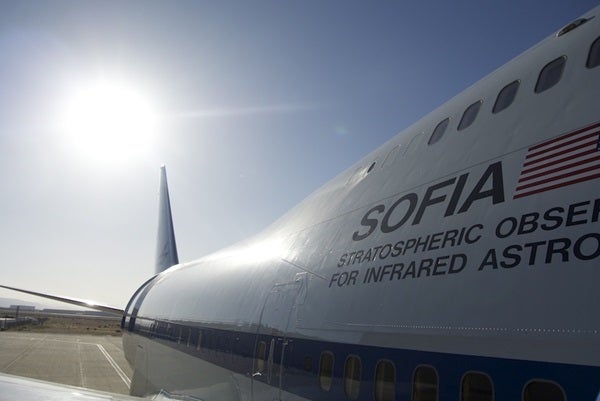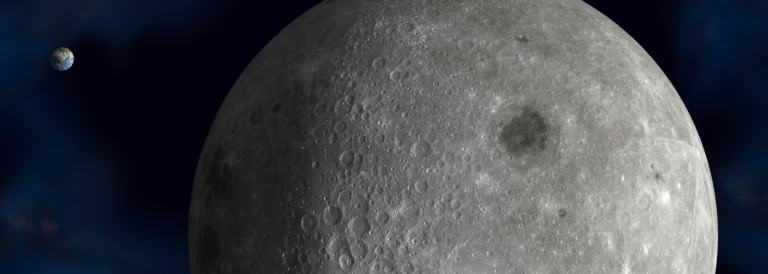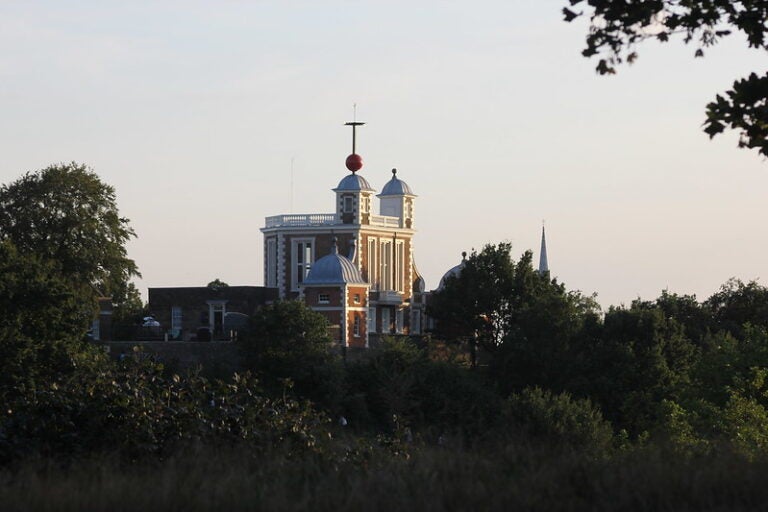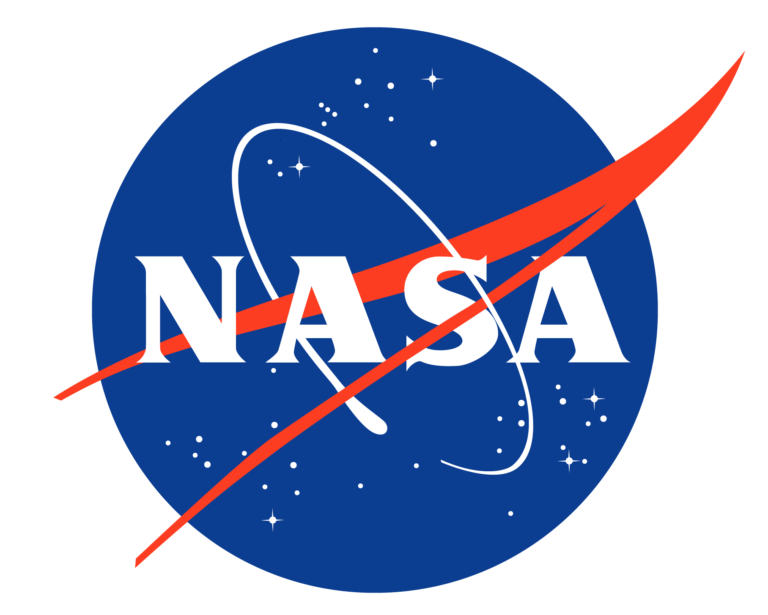Most infrared light from outer space never reaches the ground. It’s absorbed along the way by plentiful water in Earth’s atmosphere. So if astronomers want to observe that distant light, they have to get creative.
For years, particularly between the retirement of the Spitzer Space Telescope and the launch of the James Webb Space Telescope (JWST), the Stratospheric Observatory for Infrared Astronomy (SOFIA) was that creative solution. The airborne observatory carried a 2.5-meter telescope aboard a modified Boeing 747SP airplane. Rather than going all the way to space, however, SOFIA simply flew high enough — up to 45,000 feet (13.7 kilometers) — to get above some 99 percent of the water in our atmosphere.
But earlier this year, NASA and the German Space Agency announced SOFIA would be shut down by Sept. 30. SOFIA’s final flight was overnight on Sept. 28/29, taking off from and landing at Palmdale, California. The loss of SOFIA, according to those who flew on it, will be profound. But the legacy it leaves behind is something to cherish.
Unlocking the infrared
JWST has rightly stolen headlines recently. But it’s just one piece in the toolbox astronomers use to view the infrared universe.
Infrared light has wavelengths longer than visible light, spanning the range from about 1 to 1,000 micrometers (μm). Observations at these wavelengths are particularly useful when studying astronomical targets such as cool stars, dust and gas, planets, and moons. Because infrared light is not absorbed by cool dust the way visible light is, the former often reveals what’s behind curtains of obscuring material that block our views in the visible portion of the spectrum. (Think of the infrared views of, say, the Pillars of Creation, which reveal the young stars normally hidden within sculpted clouds of gas and dust.)
Launching a telescope to space seems the natural best choice to get above pesky atmospheric water vapor. Several telescopes with either dedicated infrared instruments or those capable of observing some longer wavelengths have been made. But a space telescope is an expensive, time-consuming endeavor fraught with challenges that could end it before — or just after — it gets off the ground.
There is another option: an airplane. Flying at altitudes of 37,000 to 45,000 feet, SOFIA carried researchers and instruments into the high and dry stratosphere, above nearly all water vapor. And because SOFIA landed after each flight, instruments could be easily swapped out, repaired, and upgraded. Astronomers flying with the telescope even could make tweaks and repairs mid-observation, if necessary.
This innovative solution, following in the footsteps of previous airborne observatories before it, merged the capabilities of a space-based observatory with the convenience and access of a ground-based one. “SOFIA found its own niche … and used it to do science that isn’t possible from anywhere else,” Pete Ashton, a SOFIA instrument scientist, tells Astronomy.
Greatest hits
Since seeing first light in 2010, SOFIA has racked up a number of impressive accomplishments. One of the biggest and most recent was the detection of helium hydride — the earliest molecule believed to have formed in the universe — within the planetary nebula NGC 7027. Although astronomers had been looking for helium hydride since the 1970s, it took SOFIA’s capabilities to finally spot it in 2019.
SOFIA also confirmed the presence of water in the soil of Clavius Crater on the Moon — a find made during the observatory’s first-ever look at our satellite. Because Clavius is on the sunlit, Earth-facing side of Luna, its presence shows that precious water deposits might not be limited to permanently shadowed, cold lunar locations.
SOFIA’s mobile capabilities also made it the perfect platform for observing occultations, when a planet or asteroid in our solar system passes in front of a distant star. The shadows created by occultations are comparatively tiny and much harder to predict than those of, say, total solar eclipses. So, a telescope that can quickly move to exactly where it needs to be to make a challenging observation is key.
SOFIA rose to the task, on several occasions flying under the swiftly moving shadow of the dwarf planet Pluto as it clocked some 53,000 mph (85,300 km/h) across remote regions of our planet. Such observations gave researchers an inside peek into Pluto’s thin atmosphere, showing that it’s full of short-lived haze that must be replenished regularly by processes on the dwarf planet.
Grounded for good
But despite its accomplishments, the recently published decadal survey, also called Astro2020, stated that SOFIA’s yearly operating price tag of $86 million USD — on par with the Hubble Space Telescope and Chandra X-ray Observatory — could not be justified by its “modest” scientific output as measured by the number of published papers based on data taken from the telescope.
From 2014 to 2020, the survey said, SOFIA flights resulted in 178 scientific papers. Hubble and Chandra data combined were used in more than 2,700 papers over that same period. “The committee found no path by which SOFIA can significantly increase its scientific output to a degree that is commensurate with its cost,” the survey said. Ultimately, the committee endorsed NASA’s existing plan to end SOFIA’s operations.
But SOFIA’s six instruments covered a wavelength range of 0.3 to 1,600 µm — essentially the entire infrared spectrum. This is a range JWST cannot replicate. Although its 6.5-meter mirror is larger, JWST only observes from 0.6 to 28.3 μm. So, SOFIA could see into the far infrared, revealing portions of the universe permanently inaccessible to JWST.
“The loss of SOFIA simply means loss of access to the far-infrared window for at least the next 10 years,” says Dario Fadda, a senior scientist in astronomy at the SOFIA Science Center.
Fadda and Ashton both worry shutting down SOFIA will push students and early-career researchers away from far-infrared research and into other wavelength regimes. Both are also concerned that as older scientists experienced with the kind of data SOFIA churned out retire, that institutional knowledge will be lost and will need to be rebuilt.
“SOFIA was not only important for the science which was done, but also to preserve a nucleus of people with knowledge of infrared astronomy. As with any human achievement, science needs continuity,” Fadda says.
But there are still valuable takeaways from SOFIA’s success. “I think the lesson of SOFIA is that there is some science that you just can’t get by building a scaled-up version of something else, with bigger mirrors, more detectors, etc.,” says Ashton. “I hope it serves as a reminder that sometimes the best tool for the job might look wildly different than anything you’ve ever seen before.”
SOFIA principal systems engineer Nancy McKown, who previously served as the observatory’s Mission Operations Manager and Mission Director, flew more than 100 times on the aircraft, including its first light flight in 2010. “I cherish the memories of the scientists’ smiles and shouts of joy when a difficult observation was executed flawlessly,” she says, admitting her last flights on SOFIA were bittersweet.
There are no current plans for a future flying observatory, but the proposed Origins Space Telescope, which could potentially launch in 2035, would reopen the far infrared to astronomers. Alternatively, the Astro2020 committee suggested development of a combination X-ray and infrared space telescope. But even if proposed and picked up by funding agencies, its launch would be just as far off.
Nevertheless, McKown remains hopeful. “There may be some gaps now, but I’m confident that the thirst for knowledge will keep it in the long view of the big picture,” she says. “After all, the data will still be there for us to capture in the future.”

